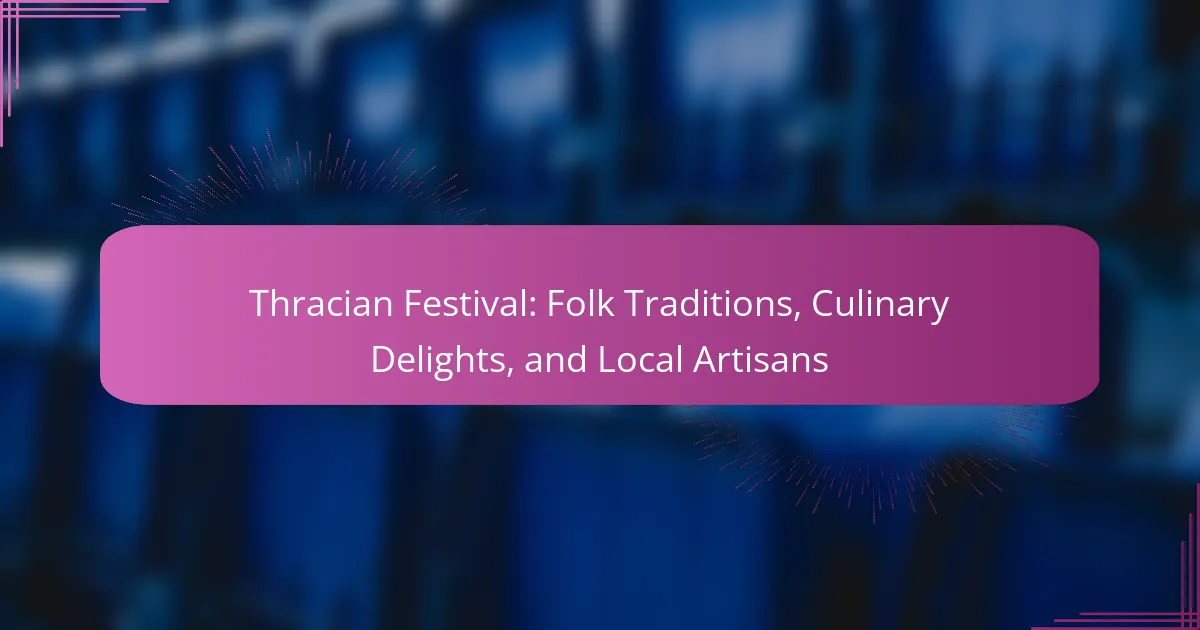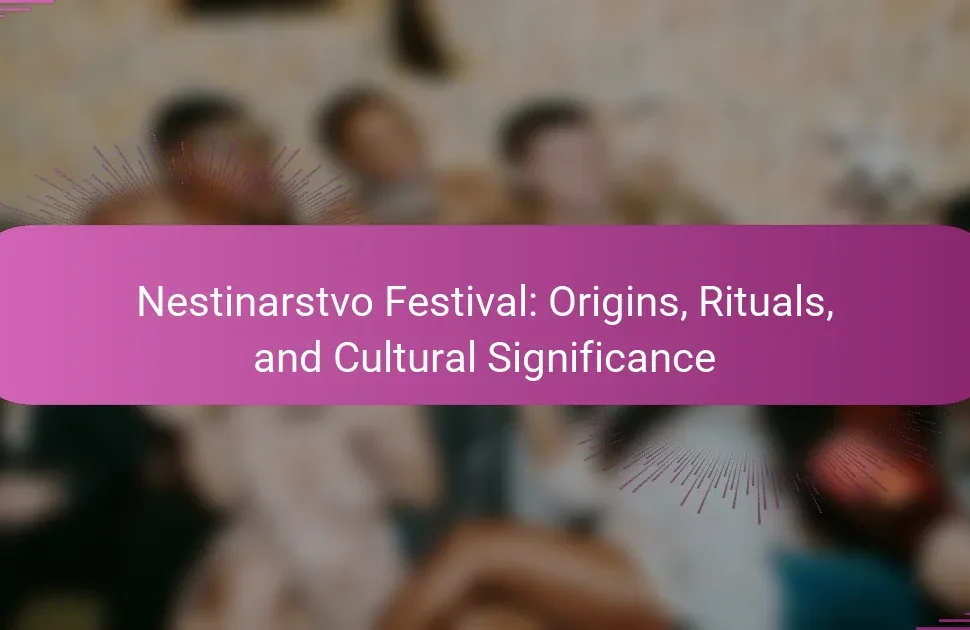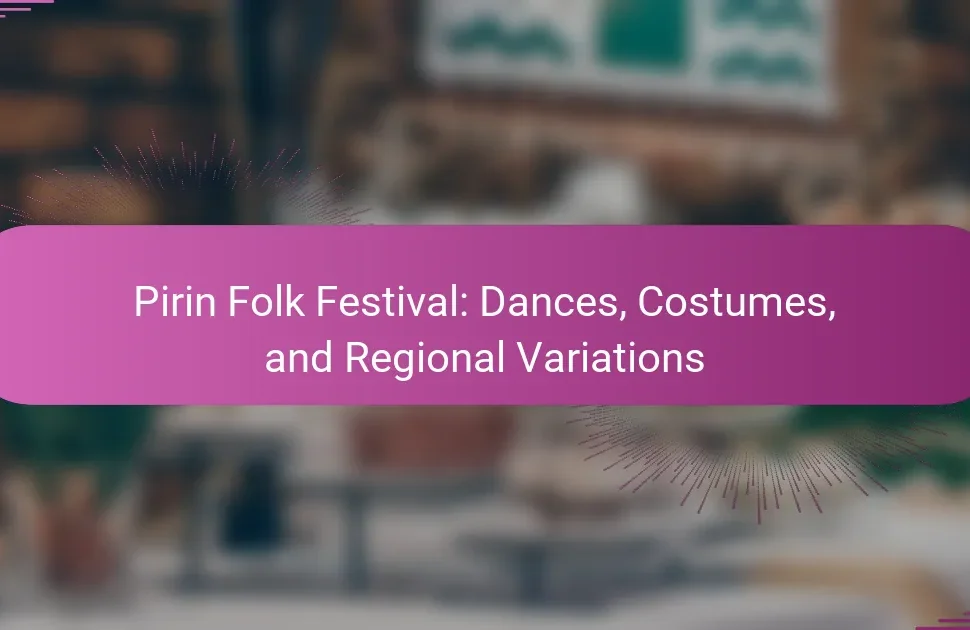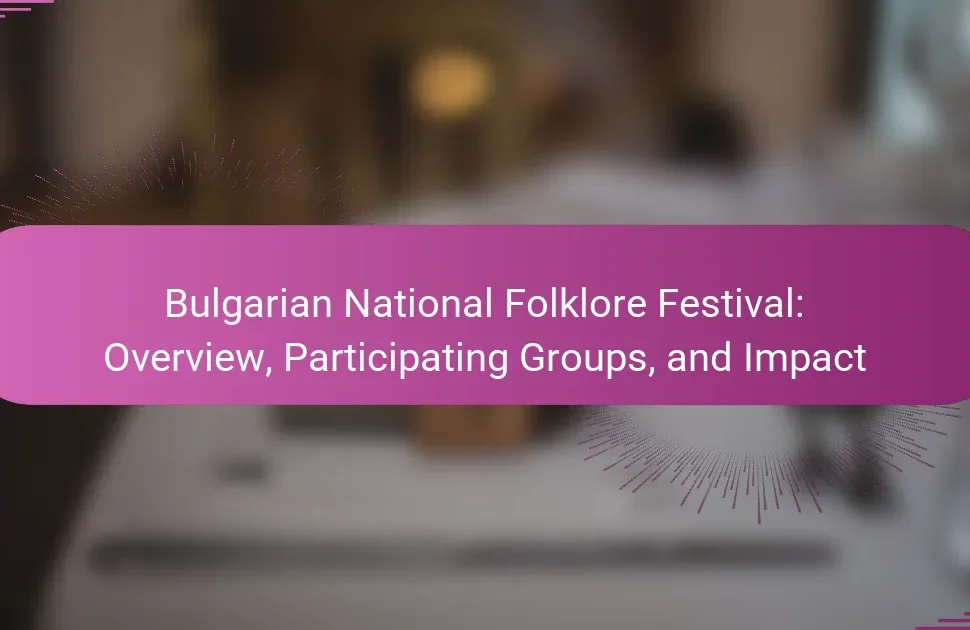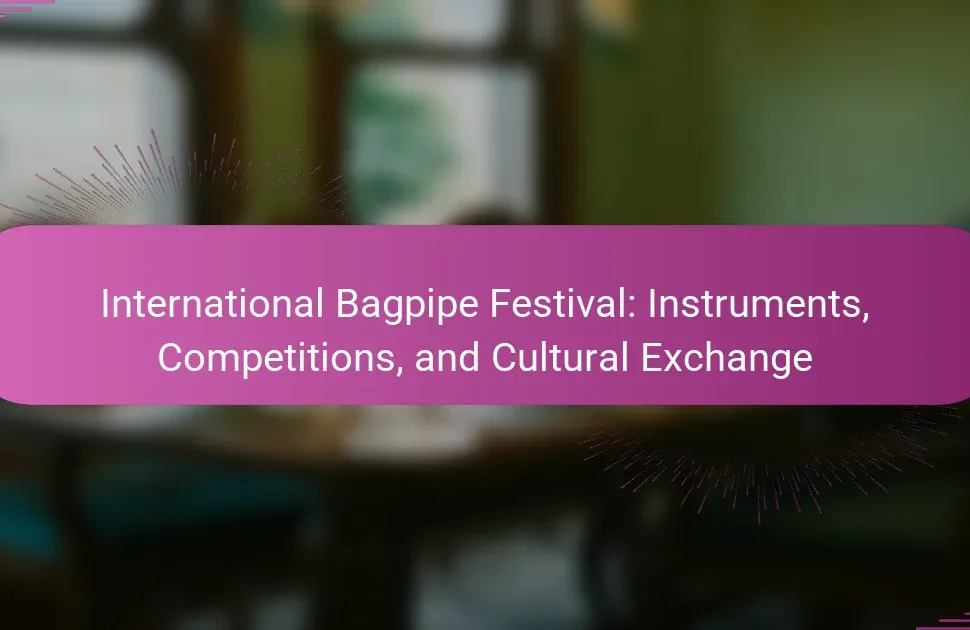Experience the vibrant Thracian Festival, where folk traditions come alive through music, dance, and crafts. Savor culinary delights featuring local dishes and unique desserts. Discover the artistry of local artisans showcasing traditional crafts and culinary skills. Engage with the rich cultural heritage that fosters community spirit and economic growth.
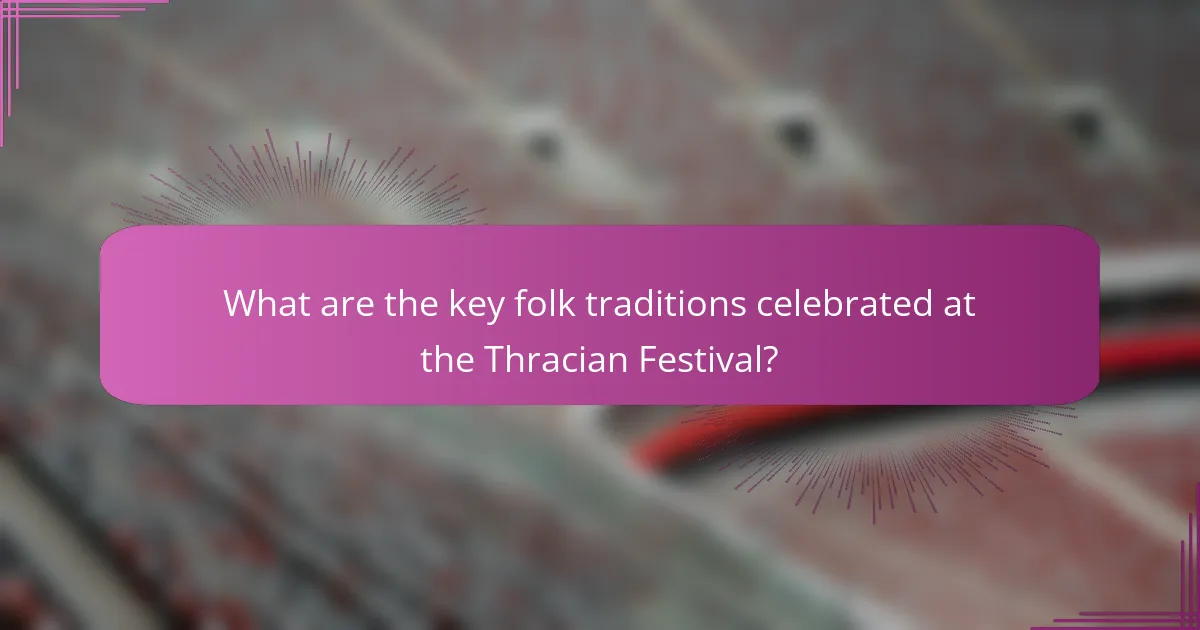
What are the key folk traditions celebrated at the Thracian Festival?
The Thracian Festival celebrates various key folk traditions, including traditional music, dance, and crafts. Participants engage in vibrant performances showcasing regional folklore. Culinary delights feature prominently, with local dishes made from traditional recipes. Artisans display unique crafts, reflecting the rich heritage of the Thracian culture. These elements create an immersive experience that honors the region’s history and community spirit.
How do local communities participate in traditional performances?
Local communities actively engage in traditional performances through participation, organization, and preservation of cultural heritage. They contribute by performing folk dances, showcasing local crafts, and sharing culinary delights at events like the Thracian Festival. These activities foster community spirit and promote cultural pride. Local artisans often collaborate, creating a vibrant atmosphere that highlights unique attributes of their traditions. Through these performances, communities sustain their heritage and educate others about their cultural significance.
Which rituals are integral to the festival experience?
Integral rituals of the Thracian Festival include folk dances, traditional music performances, and communal feasting. Participants engage in vibrant dance circles, showcasing local heritage. Culinary delights feature regional dishes, emphasizing the festival’s connection to local artisans. Rituals foster community bonds and celebrate Thracian culture.
What role does music play in the festival’s cultural expression?
Music plays a vital role in the Thracian Festival’s cultural expression by showcasing local traditions and fostering community connections. It serves as a medium for storytelling, reflecting the region’s history and identity. Traditional folk songs and dances highlight unique attributes of Thracian culture, while performances by local musicians enhance the festival’s atmosphere. The diversity of musical styles, from ancient rhythms to contemporary interpretations, illustrates the evolution of cultural practices. Engaging with music at the festival allows attendees to experience a rich tapestry of sounds that unite generations and celebrate heritage.
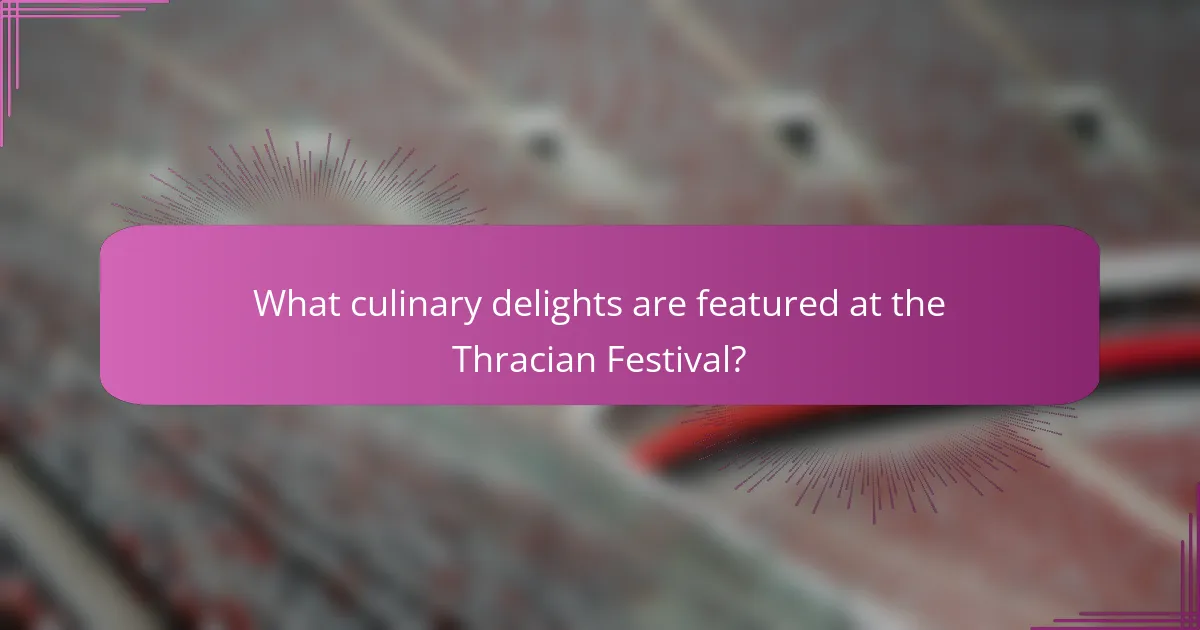
What culinary delights are featured at the Thracian Festival?
The Thracian Festival features a variety of culinary delights that showcase traditional flavors. Visitors can enjoy dishes like grilled meats, stuffed vegetables, and local cheeses. Unique desserts such as baklava and yogurt-based treats are also popular. Local wines and spirits enhance the tasting experience, reflecting the region’s rich agricultural heritage.
Which traditional dishes are must-try items at the festival?
Must-try dishes at the Thracian Festival include traditional moussaka, grilled meats, and stuffed peppers. These culinary delights showcase local flavors and ingredients.
1. Moussaka – A layered dish made with eggplant, minced meat, and béchamel sauce.
2. Grilled meats – Varieties include lamb and pork, often seasoned with local herbs.
3. Stuffed peppers – Peppers filled with rice, herbs, and sometimes minced meat.
4. Yogurt soup – A refreshing cold soup, perfect for warm festival days.
5. Baklava – A sweet pastry made with layers of filo dough, nuts, and honey.
How do local ingredients influence the festival’s culinary offerings?
Local ingredients significantly enhance the culinary offerings at the Thracian Festival by showcasing regional flavors and traditions. These ingredients reflect the local agricultural heritage, promoting sustainability and community engagement. For instance, dishes often feature unique local produce like peppers, herbs, and grains, highlighting their freshness and quality. This connection to local farms fosters a sense of pride among artisans and chefs, enriching the festival’s overall experience. Additionally, using these ingredients supports local economies and preserves traditional cooking methods, making the festival a celebration of both culture and cuisine.
What unique beverages are associated with the Thracian culinary experience?
Unique beverages associated with the Thracian culinary experience include fermented drinks and herbal infusions. Notable examples are “rakia,” a traditional fruit brandy, and “mavrud” wine, renowned for its rich flavor. These beverages reflect the region’s agricultural heritage and cultural practices. Additionally, herbal teas made from local plants enhance the dining experience, offering unique flavors and health benefits.
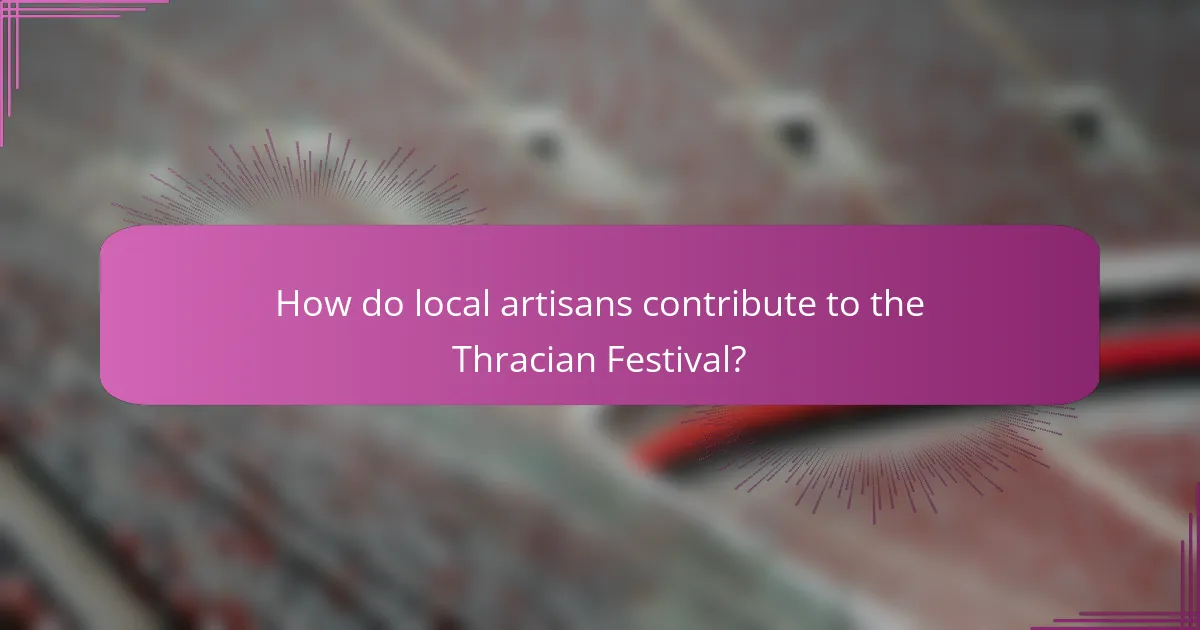
How do local artisans contribute to the Thracian Festival?
Local artisans significantly enhance the Thracian Festival by showcasing traditional crafts and culinary skills. Their handmade products reflect local culture and heritage, attracting visitors and fostering community engagement. Artisans offer unique items, such as pottery, textiles, and jewelry, which embody the festival’s spirit. Additionally, they contribute to the festival’s culinary delights, providing authentic local dishes that highlight regional flavors. This collaboration enriches the festival experience, promoting appreciation for local craftsmanship and traditions.
What types of crafts are showcased by artisans during the festival?
Artisans at the Thracian Festival showcase a variety of crafts including pottery, weaving, wood carving, and traditional jewelry. These crafts reflect local heritage and artistic skills. Pottery often features intricate designs, while weaving highlights traditional patterns. Wood carving showcases unique local motifs, and jewelry incorporates regional materials. Each craft contributes to the festival’s celebration of folk traditions and cultural identity.
How does artisan participation enhance the festival atmosphere?
Artisan participation significantly enhances the festival atmosphere by fostering community engagement and showcasing local craftsmanship. Artisans create interactive experiences through demonstrations, allowing visitors to appreciate traditional skills. Their unique creations add visual appeal and cultural richness, contributing to a vibrant and authentic festival environment. Additionally, artisans often share stories behind their work, deepening connections between attendees and local heritage.
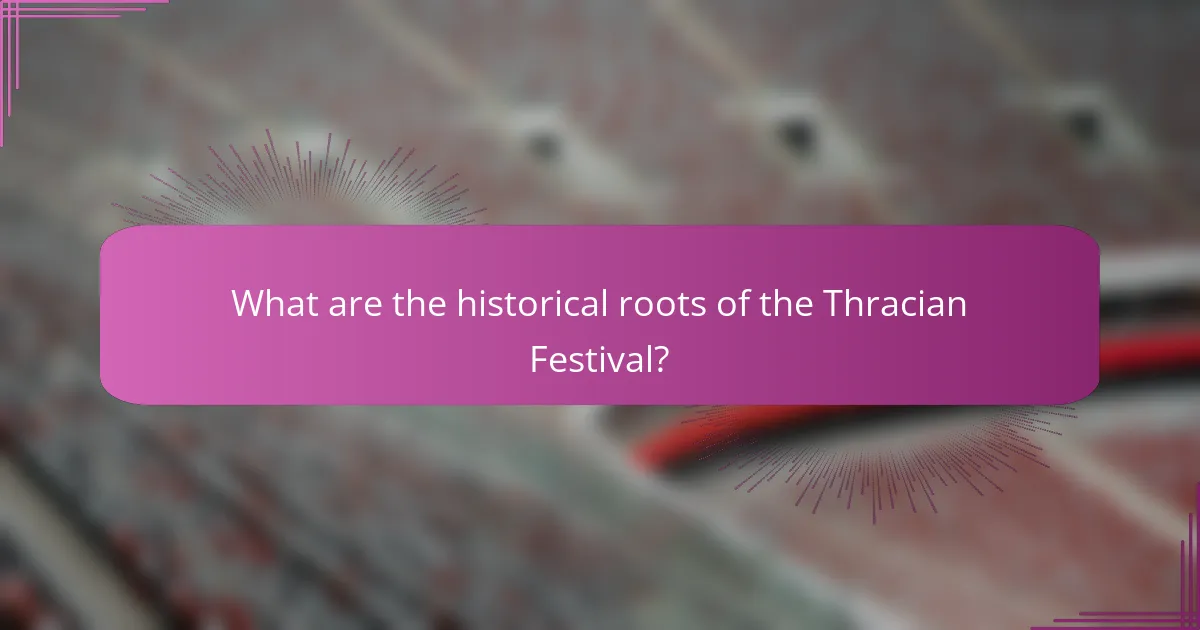
What are the historical roots of the Thracian Festival?
The Thracian Festival has roots in ancient Thracian rituals celebrating agriculture, fertility, and community. These traditions evolved over centuries, blending with local customs and folk practices. The festival highlights the region’s rich cultural heritage through music, dance, and culinary delights, showcasing the unique attributes of local artisans.
How has the festival evolved over the years?
The Thracian Festival has evolved significantly, blending traditional folk customs with modern culinary experiences. Initially focused on authentic local music and dance, it now showcases diverse food offerings and artisanal crafts. Over the years, community participation has increased, enhancing its cultural richness. The festival now attracts visitors from various regions, promoting Thracian heritage and fostering local pride.
Which historical figures or events are commemorated during the festival?
The Thracian Festival commemorates historical figures such as the Thracian kings and events like ancient rituals. These figures symbolize the region’s rich heritage and cultural significance. The festival showcases traditional music, dance, and culinary practices that honor this history. Local artisans participate by displaying crafts that reflect Thracian artistry and traditions.

What are the social impacts of the Thracian Festival on local communities?
The Thracian Festival significantly enhances local communities through cultural enrichment and economic stimulation. It fosters social cohesion by bringing together diverse groups to celebrate shared heritage.
Local artisans benefit from increased visibility, leading to higher sales of traditional crafts. Culinary offerings showcase regional flavors, attracting tourists and promoting local agriculture.
Community engagement rises as residents participate in organizing events, strengthening bonds and enhancing civic pride. The festival also serves as a platform for cultural exchange, allowing visitors to experience and appreciate Thracian traditions.
Overall, the Thracian Festival acts as a catalyst for social and economic development, reinforcing the identity and unity of local communities.
How does the festival promote cultural exchange and tourism?
The Thracian Festival promotes cultural exchange and tourism by showcasing folk traditions, culinary delights, and local artisans. This event attracts visitors, fostering interactions among diverse cultures. Attendees experience traditional music, dance, and crafts that highlight the region’s heritage. Additionally, local cuisine enhances the festival’s appeal, inviting tourists to savor unique flavors. As a result, the festival boosts local economies and encourages cultural appreciation.
What benefits do local businesses gain from the festival?
Local businesses gain significant benefits from the Thracian Festival, including increased foot traffic, brand exposure, and sales opportunities. The festival attracts visitors, enhancing local visibility. Artisans showcase unique products, fostering community engagement. Collaboration among businesses strengthens local networks, promoting economic growth.
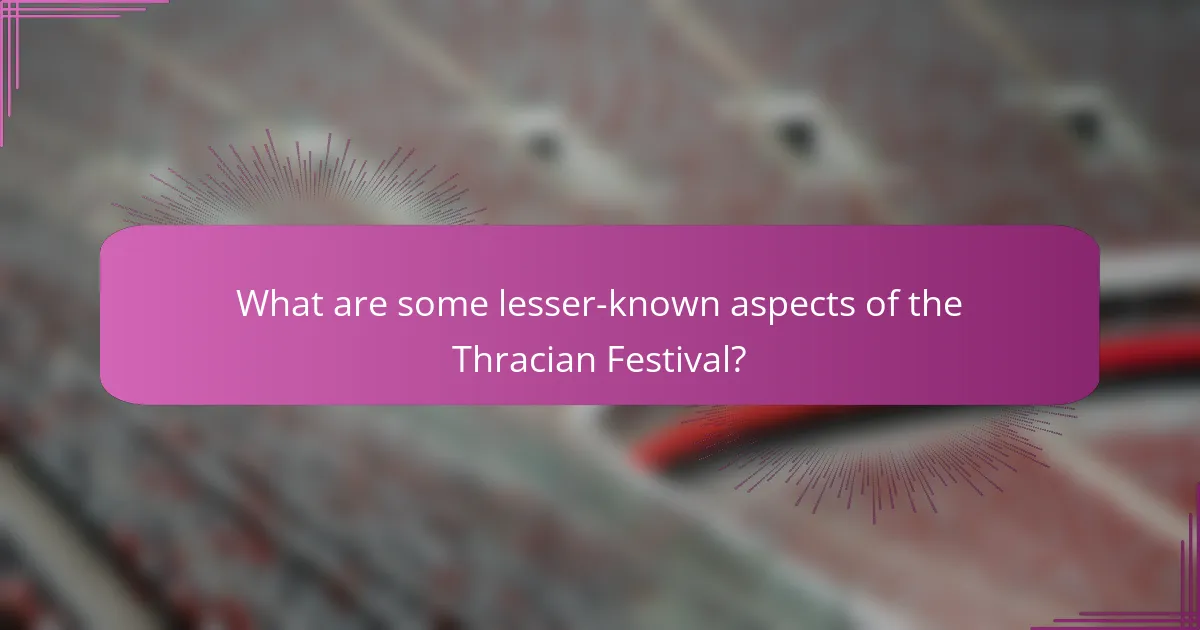
What are some lesser-known aspects of the Thracian Festival?
The Thracian Festival features unique rituals, traditional crafts, and regional folklore often overlooked. One lesser-known aspect is the ancient Thracian rites, which include offerings to nature spirits, reflecting deep cultural ties to the land. Additionally, local artisans showcase rare craftsmanship, such as intricate wood carvings and handmade pottery, embodying centuries-old techniques. The culinary aspect includes unique dishes like ‘sarmi’, which are rarely found outside the region, highlighting local ingredients and flavors. These elements contribute to a rich tapestry of cultural heritage that defines the festival.
Which rare traditions are at risk of being lost?
The Thracian Festival faces risks of losing unique traditions such as ancient folk dances, traditional culinary practices, and artisan craftsmanship. These elements are endangered due to modernization and declining participation. The festival highlights the importance of preserving cultural heritage, as these rare traditions contribute to local identity and community cohesion. Efforts to document and promote these practices are crucial for their survival.
How do festival organizers ensure the preservation of unique practices?
Festival organizers ensure the preservation of unique practices through community involvement and education. They engage local artisans to showcase traditional crafts, fostering a sense of pride and continuity. Workshops and demonstrations provide hands-on experiences, allowing attendees to learn about historical techniques. Collaboration with cultural experts helps maintain authenticity in performances and culinary offerings. Regular feedback from participants ensures that practices evolve while staying true to their roots.
What insights can be gained from attendees’ experiences at the festival?
Attendees’ experiences at the Thracian Festival reveal rich insights into local culture, traditions, and community engagement. Participants often highlight the authenticity of folk performances, showcasing traditional music and dance that celebrate regional heritage. Culinary delights, such as local dishes prepared by artisans, offer a unique taste of the area’s gastronomy, fostering appreciation for traditional cooking methods. Additionally, interactions with local artisans provide a deeper understanding of craftsmanship and the importance of preserving cultural identity. Overall, the festival serves as a vibrant platform for cultural exchange and community bonding.
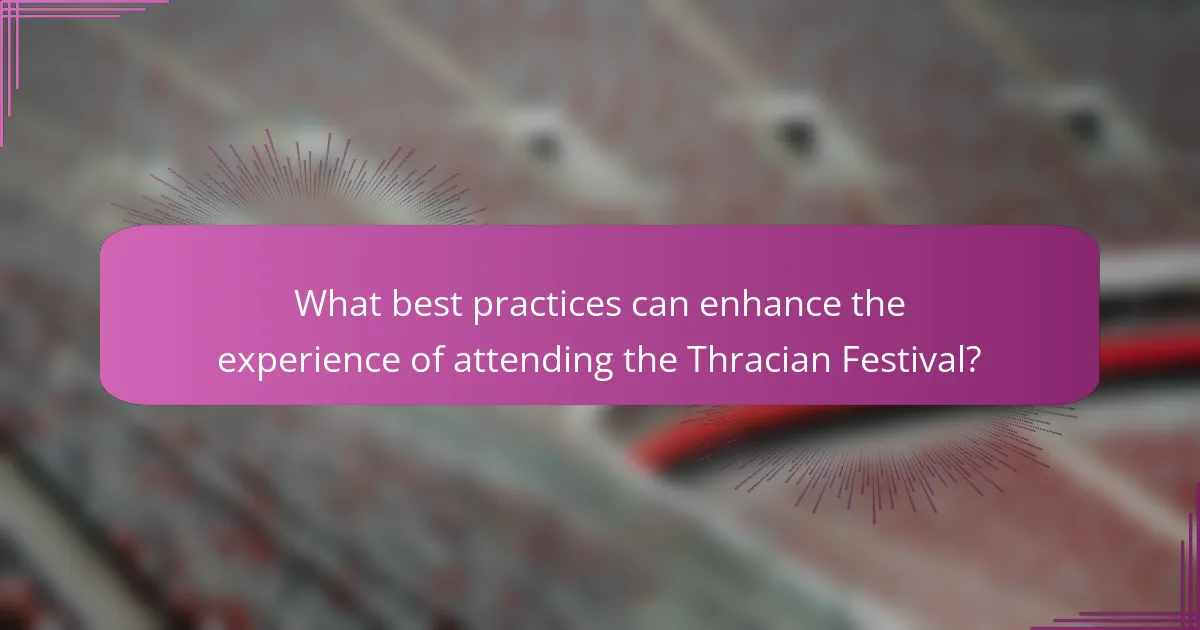
What best practices can enhance the experience of attending the Thracian Festival?
To enhance the experience of attending the Thracian Festival, visitors should embrace local customs, savor traditional dishes, and engage with artisans. Prioritize these best practices for a memorable visit:
1. Attend workshops to learn folk crafts from local artisans.
2. Sample diverse culinary delights, including regional specialties.
3. Participate in folk dances to immerse in cultural traditions.
4. Explore local markets for unique handmade souvenirs.
5. Plan visits during peak events for vibrant performances.
How can visitors prepare for a culturally immersive experience?
Visitors can prepare for a culturally immersive experience at the Thracian Festival by engaging in research and local customs. Understanding traditional folk practices enhances appreciation. Taste local culinary delights, such as regional dishes, to connect with the culture. Interacting with local artisans provides insight into craftsmanship. Additionally, learning a few key phrases in the local language fosters goodwill and enhances the experience.
What are common mistakes to avoid when attending the festival?
To fully enjoy the Thracian Festival, avoid common mistakes like neglecting to plan your schedule, skipping local dishes, and overlooking artisan stalls.
First, create a festival itinerary to ensure you don’t miss performances and activities. Second, try traditional culinary delights, such as local cheeses and pastries, to immerse yourself in the culture. Lastly, engage with local artisans; their unique crafts reflect the region’s heritage.
Which tips can help maximize enjoyment of the culinary and artisanal offerings?
To maximize enjoyment of the culinary and artisanal offerings at the Thracian Festival, engage with local vendors and participate in tastings. Explore diverse dishes and traditional recipes that showcase the region’s unique flavors. Attend workshops to learn about the preparation methods and cultural significance of the foods. Embrace the atmosphere by enjoying live music and performances that enhance the overall experience.
